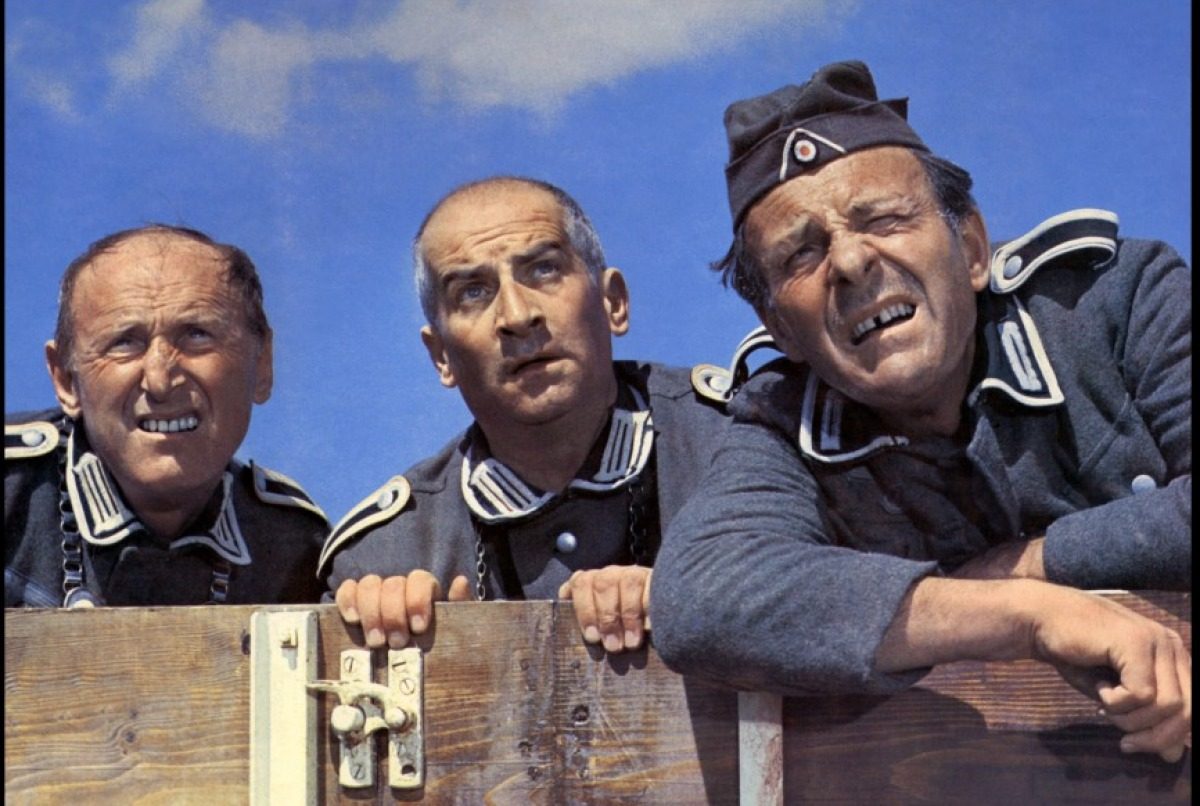La Grande Vadrouille

La Grande vadrouille
(The Great Promenade)
Gérard Oury
France – 1966

Screenplay: Gérard Oury, Danièle Thompson, Marcel Jullian, Georges Tabet, André Tabet
Cinematography: André Domage Claude Renoir
Production: Les Films Corona The Rank Organisation
Language: French, English, German
Duration: 122 min
Color: Color
Synopsis: A Royal Airforce Bomber is shot down over Paris by the Germans. The pilot, Sir Reginald, narrowly escapes by parachute. He now has to try to make his way back to England accompanied by a quarrelling duo of silly civilians: a sad-sack housepainter and splenetic orchestral conductor. With their help, the British airman sets out to cross the demarcation line between Nazi-occupied Northern France and the South, from where he will be able to get back home. But first, the three of them must avoid the German troops, and the consequences of their own blunders.
Notes:
One of the highest grossing domestic films in the history of French cinema, La Grande vadrouille recalls the narrative of the famed, long-running comic book series Asterix and Obelix in which a bubbling pair of mismatched Gauls delight in tricking an incompetent conqueror. The film relies on slapstick and visual gags arising from differences in height, class, and disposition between a comic pair. The film touched a chord in a France that welcomed a comic portrayal of victory over the Nazi Germans as a Gallic rather than American or Russian exploit. La Grande vadrouille also comforted a nation under true generational duress in the aftermath of the Algerian War as the republican culture of France would be challenged by Maoist currents during the student protests of the 1960s. The film also is of key importance in French cinema history. La Grande vadrouille is the best example of a film rewarded at the French domestic box office that contrasts to the narrative favored by the cultural elite’s tendency to produce and critically praise films that are not box office draws. French films that were critically lauded and promoted since the 1930s are almost uniformly absent from the nation’s all-time box office rankings. Under what some observers have considered to be elitist cultural influences, the French cinema has promoted and subsidized films since the 1930s that at their heart are based on tragic elements thematically light-years away from the farce history of La Grande vadrouille.
It is here that Gerard Oury, with the indispensable duo of Bourvil and Louis de Funès introduced a radical change in the expectations of French audiences with the two most popular comedies of the 1960s: La Grande vadrouille (1966) and Le Corniaud (1965). With these films, comedy becomes a national genre, and one not without history in France, where the boulevard plays, vaudevillian roots in situation comedy. The mainstream comedy could be said to have no substantial psychological or moral pretensions, though in Oury’s films comedy is always accompanied by some socio-critical intention. Though La Grande vadrouille does not belong to the antiwar film category proper, its story is an interesting look at a dying social order, a dissection of the intractability of class differences. The narrative, though closer to an action film than a social satire, told popular audiences how class divisions continue to run deep, at times deeper than divisions between nations. Oury kept all the action interpersonal in one way or another, so it was always about human relationships, needs, and values, even when it came to the film’s momentously significant depiction of war (leaving war’s brutalities off-screen). The subtle but cumulatively overwhelming force arising from La Grande vadrouille’s deep compassion and magnificent cinematic prowess has made the comedy of this film dear to audiences to this day, with frequent repertory theatre and television reruns.
Notes based on Celli, C. National Identity in Global Cinema: How Movies Explain the World. Springer, 2016. and Powrie, Phil. French Cinema in the 1980s: Nostalgia and the Crisis of Masculinity. Clarendon Press, 1997.


